Introduction to OpenAI
Pre Requisites
Understanding OpenAI Models
Discover how OpenAI’s advanced AI models—GPT-4, DALL·E, Text-to-Speech, Whisper, Embeddings, and Moderation—power applications across content creation, design, accessibility, and safety. Explore their architectures, key features, and real-world use cases.
GPT-4
GPT-4 is OpenAI’s most capable Generative Pre-Trained Transformer, excelling at long-form text and multimodal inputs. It leverages self-attention to generate coherent, context-aware language and can process both text and images.
Key Features
- Human-Like Text Generation: Produces fluent, contextually relevant prose.
- Transformer Architecture: Self-attention enables efficient sequence modeling.
- Pre-Trained Knowledge: Ingested vast datasets—books, articles, and websites.
- Zero-Shot & Few-Shot Learning: Tackles new tasks with minimal or no examples.
Training Workflow
- Pretraining
Learns language patterns from massive text corpora. - Fine-Tuning
Specializes in domains (e.g., legal, medical) for higher accuracy. - Multimodal Input
Understands and generates combined text–image responses.
Common Use Cases
- Chatbots & Virtual Assistants
- Automated Content Creation (articles, marketing copy)
- Educational Tutors & Interactive Learning
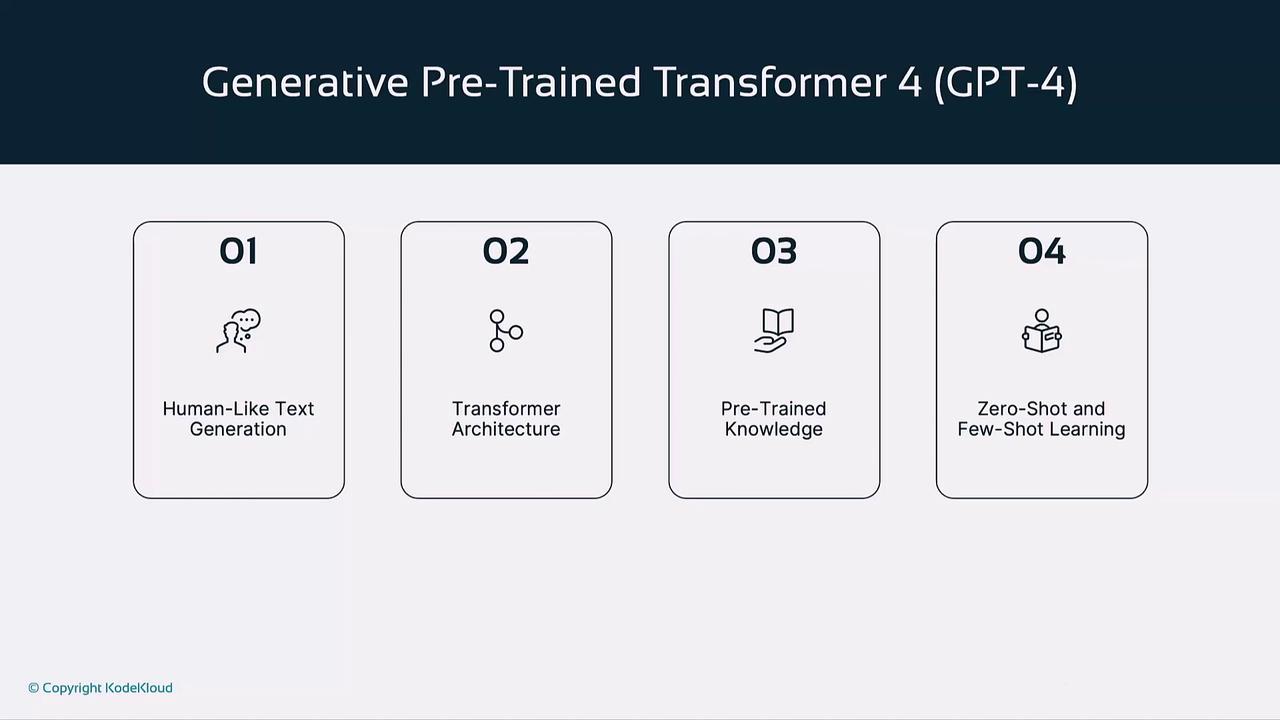
DALL·E
DALL·E transforms text prompts into high-quality images using transformer and diffusion techniques. Trained on paired caption–image datasets, it balances photorealism with creative flair.
Key Features
- Text-to-Image Generation: Converts written descriptions into visuals.
- Dual Training: Learns semantics from text–image pairs.
- Diffusion Refinement: Iteratively denoises to enhance detail.
- High Resolution Output: Delivers crisp, gallery-quality images.
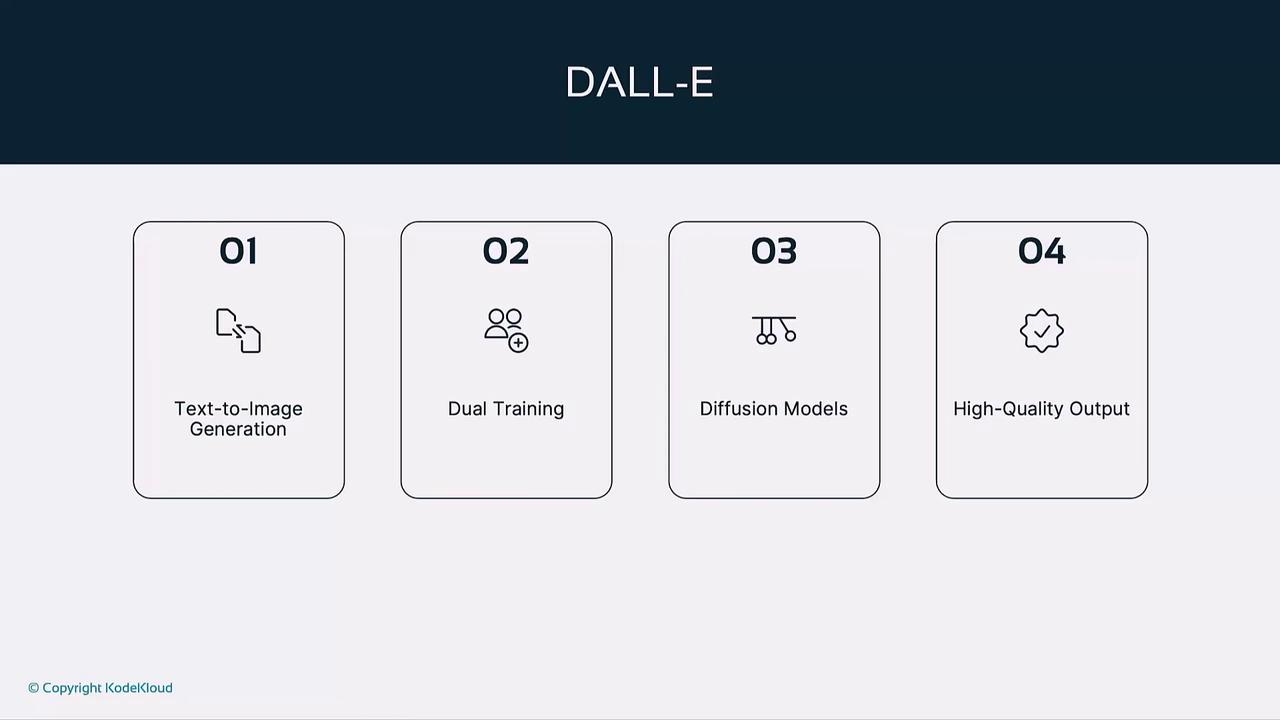
Popular Use Cases
| Use Case | Description |
|---|---|
| Marketing & Advertising | Create campaign visuals without photoshoots. |
| Art & Design | Prototype illustrations, concept art, graphics. |
| Product Development | Visualize mock-ups before manufacturing. |
| Market Analysis | Generate trend visuals for strategy planning. |
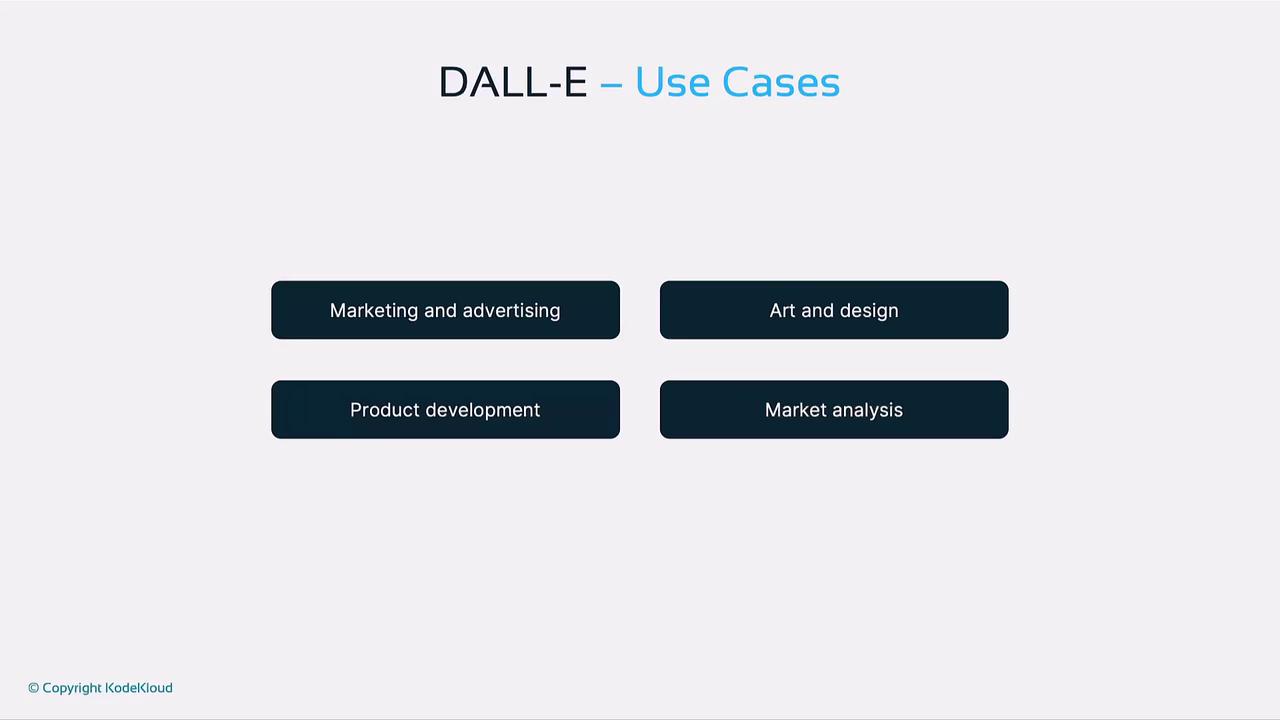
Text-to-Speech (TTS)
OpenAI’s TTS models deliver natural, expressive speech from text. Built on deep neural networks, they capture pitch, pace, and emotion for lifelike audio synthesis.
Key Features
- Natural-Sounding Speech: Mimics human intonation and cadence.
- Custom Voice Styles: Adapts tone for narration, announcements, or character voices.
- Low Latency: Fast audio generation optimized for real-time use.
- Emotion & Prosody Control: Fine-tune expressiveness.
Applications
- Voice Assistants & IVR Systems
- Audiobook & Podcast Narration
- Accessibility Tools for Visually Impaired Users
- Interactive E-Learning Platforms
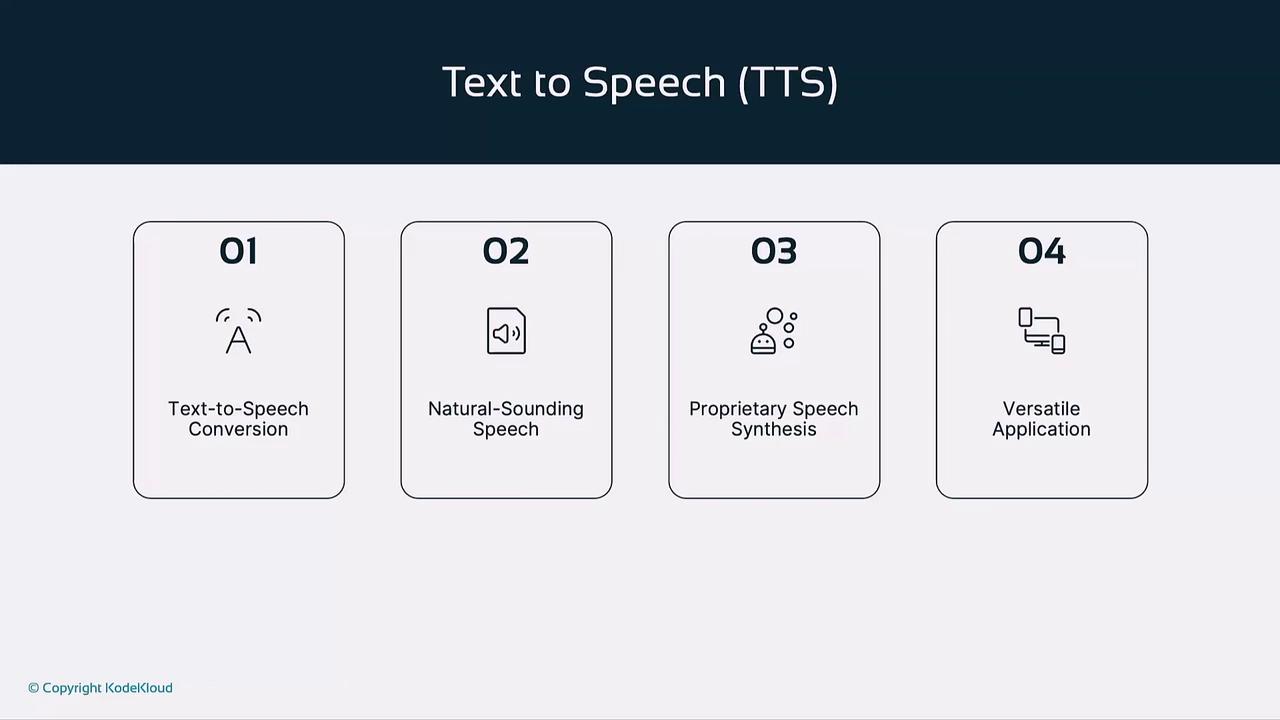
Whisper (Automatic Speech Recognition)
Whisper is an end-to-end ASR model that transcribes audio into text with robust performance across accents and languages.
Key Features
- Sequence-to-Sequence Architecture: Directly maps audio waveforms to text.
- End-to-End Learning: Unifies acoustic, pronunciation, and language modeling.
- Multilingual Transcription: Supports dozens of languages and dialects.
- High Accuracy: Trained on diverse global speech datasets.
Real-World Use Cases
- Transcription Services for meetings and interviews
- Live Captioning at events and broadcasts
- Language Learning Tools for listening comprehension
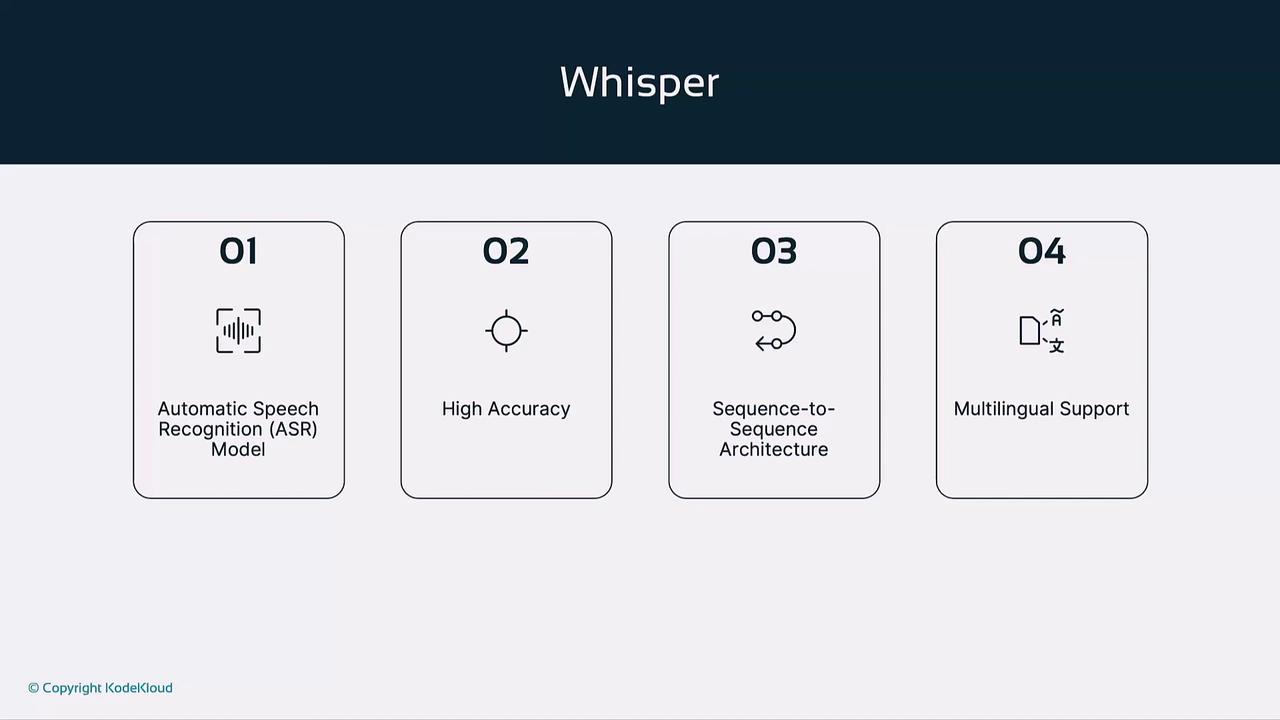
Embeddings
Embeddings encode text or images into high-dimensional vectors that capture semantic relationships, enabling powerful search and recommendation.
How Embeddings Work
- Vector Representation: Converts tokens or images into numeric vectors.
- Semantic Proximity: Similar meanings map to nearby vectors.
- Contextual Encoding: Leverages surrounding text during pretraining.
- Abstract Relationship Modeling: Encodes synonyms and nuanced concepts.
Note
Similarity is often computed with cosine similarity, measuring the angle between two vectors to gauge semantic closeness.
Common Applications
- Semantic Search & Retrieval
- Recommendation Engines
- Document Clustering & Topic Modeling
- Enhanced UX through Intent Understanding
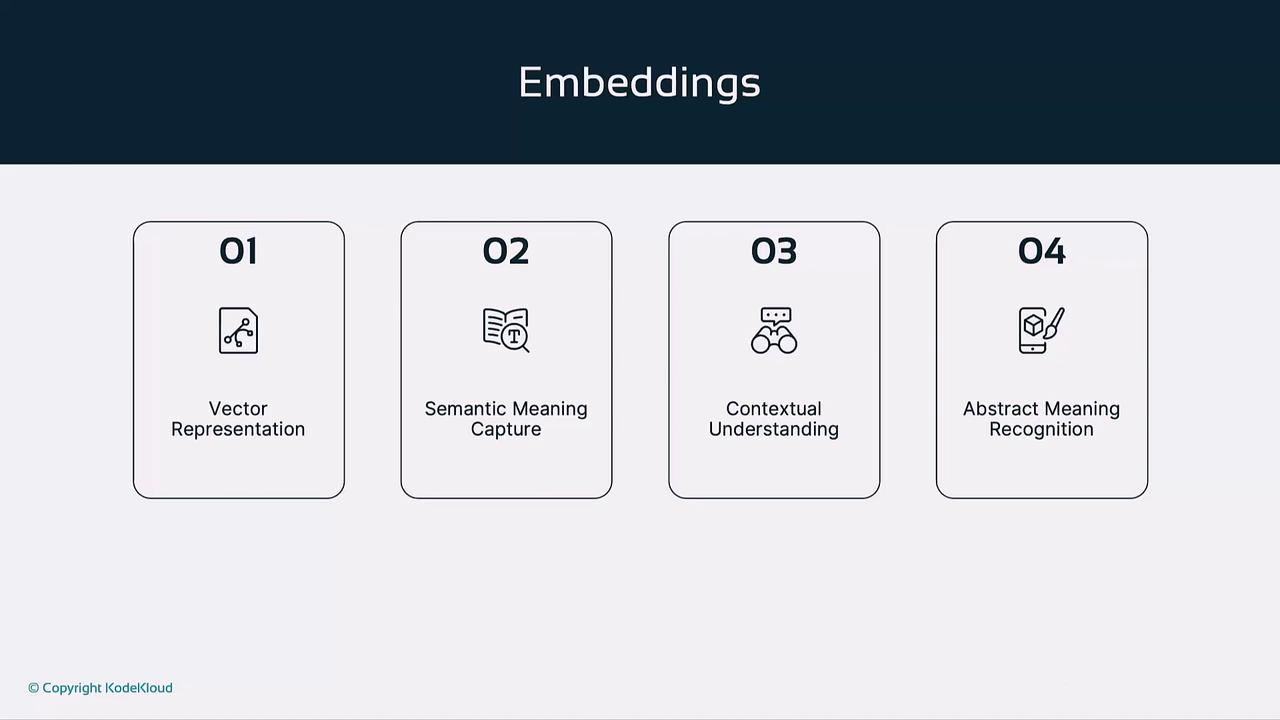
Moderation
OpenAI’s Moderation model flags harmful content in real time, ensuring user safety and compliance with platform policies.
Core Mechanisms
- Fine-Tuned Classifiers: Distinguish safe versus unsafe language.
- Multi-Label Categories: Labels text as toxic, violent, explicit, etc.
- Real-Time Screening: Intercepts unsafe content before delivery.
- Continuous Learning: Adapts to emerging harmful patterns.
Warning
Automated flags should be reviewed by human moderators to balance safety with freedom of expression.
Deployment Scenarios
- Social Media Comment Filtering
- AI Chatbot Response Safeguarding
- Misinformation & Hate Speech Detection
- Community Forum Moderation
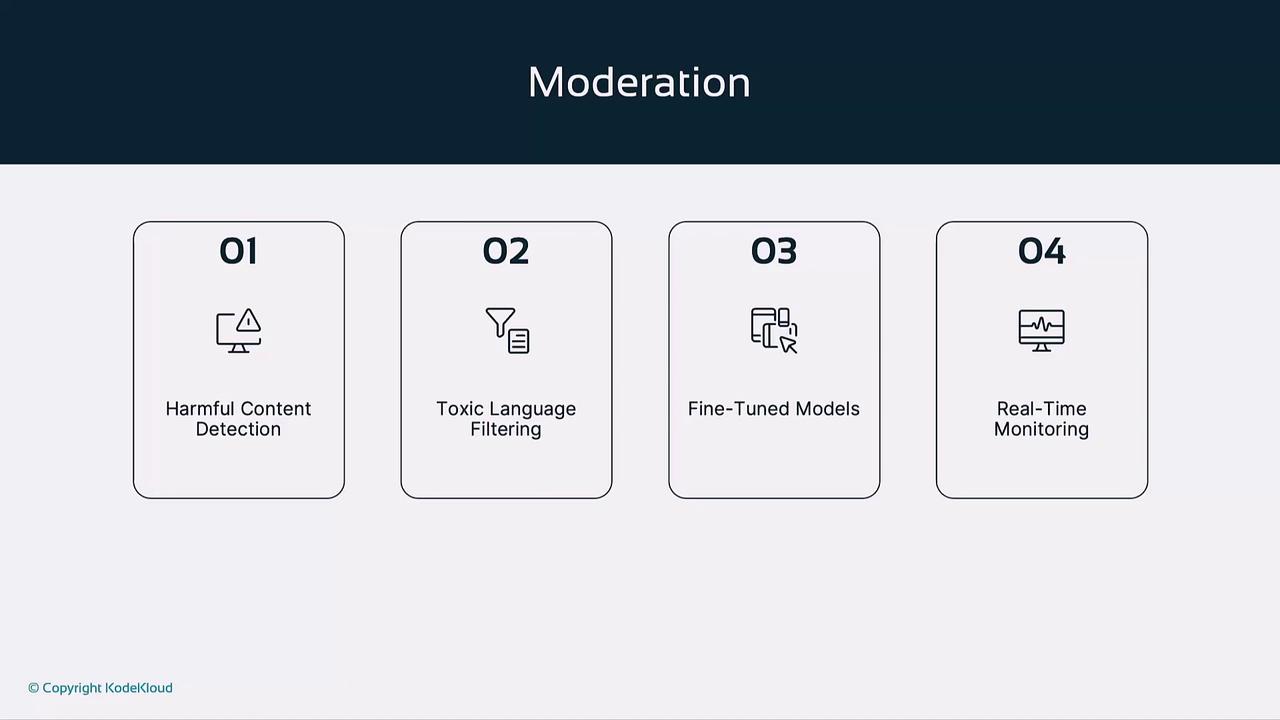
Model Comparison
| Model | Function | Key Features | Typical Use Cases |
|---|---|---|---|
| GPT-4 | Text generation (multimodal) | Human-like text, zero/few-shot learning | Chatbots, content creation, education |
| DALL·E | Text-to-image synthesis | Diffusion, dual training, high resolution | Marketing, design, prototyping |
| Text-to-Speech | Speech synthesis | Natural prosody, custom voices, low latency | Voice assistants, audiobooks, accessibility |
| Whisper | Speech recognition | Seq2Seq ASR, multilingual, end-to-end | Transcription, live captioning, language learning |
| Embeddings | Semantic vector encoding | Contextual vectors, cosine similarity | Semantic search, recommendations, clustering |
| Moderation | Content safety | Real-time flags, multi-label classifier | Social media, chatbots, misinformation control |
Links and References
- OpenAI API Reference
- GPT-4 Overview
- DALL·E Documentation
- Whisper GitHub Repository
- Text-to-Speech Guide
- Embeddings API
- Moderation Endpoint
Watch Video
Watch video content